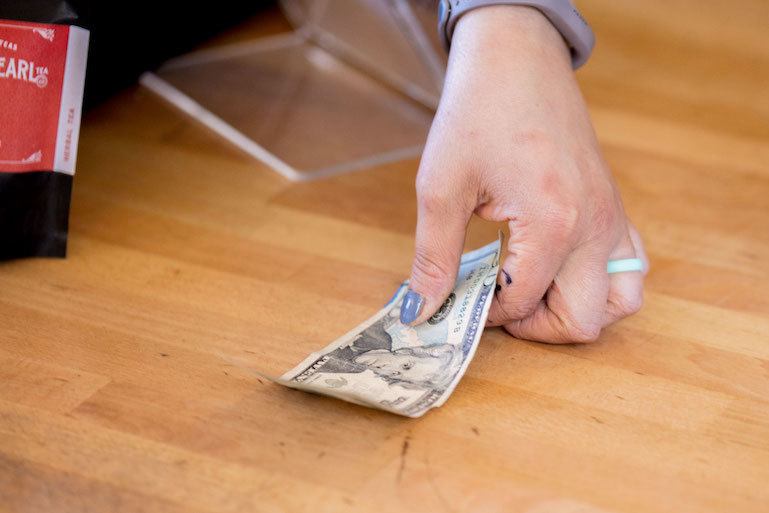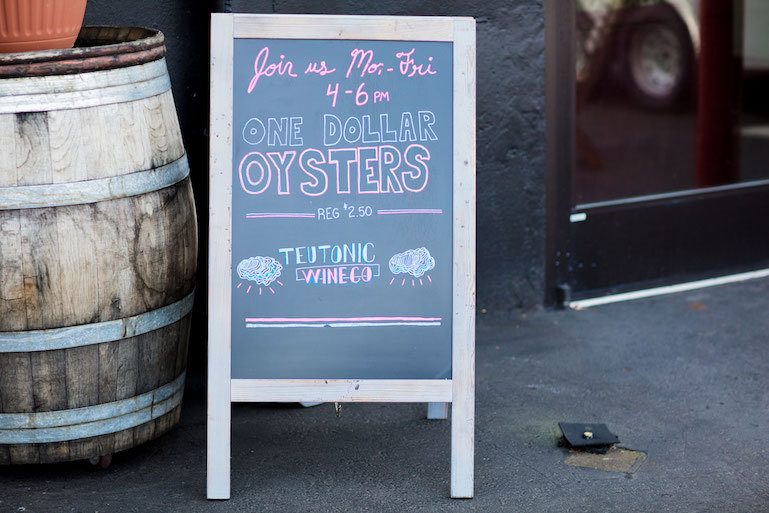
13 Tips for Marketing Your Restaurant Business
An excellent marketing strategy can be the difference between a restaurant that survives and one that fails in an industry with no shortage of choices. Do you have the knowledge to market your restaurant effectively, even when you’re on a tight budget?
You don’t have to tell us: managing a restaurant is a massive responsibility. Whether you’ve run a restaurant for a while or you’re embarking on a journey to open a new one, you’ve probably heard the same statistic (or some variation) over and over: 80 percent of newly-opened restaurants don’t make it past five years.
While some restaurants are doomed from the start because of a boring concept, bad food, or some other type of mismanagement, others fail because the owners think that once they open their doors armed with Grandma’s famous meatball recipe, people will not only rush to have a taste, but keep coming back.
This inability to get people in the door is a major reason why restaurants fail shortly after their grand opening. The solution? Learn how to market your restaurant business effectively, even when there isn’t much room in your budget. These 13 actionable tips will help you flesh out your restaurant marketing mix so that you can increase foot traffic, as well as the odds that your business will be successful long into the future.
How to Market a Restaurant Business
You don’t have to hire a marketing team to execute an effective marketing strategy that fits within the budget of a newly opened restaurant. All you need is a little creativity, a knowledge of your target market, and a rough strategic framework to get started. With those things in place, you’re well on your way to becoming a master of marketing for restaurants.
1. Know Your Audience
The often-overlooked first step in successfully marketing your business is understanding how you’re going to target your marketing efforts. We made this the first piece of advice on the list because it’s going to directly impact the success or failure of every other marketing tip that you apply in your restaurant. This is true whether you’re running a fast-casual joint or an upscale, full-service bar.
When you start any new business, the first thing you need to do is develop a business plan. Defining your target audience is one of the key components of any well thought out business plan, because if you don’t understand who’s going to be eating your food, it’s going to be pretty hard to know what to cook them. The same is true of marketing. You can’t persuade a person to visit your restaurant if you don’t know who they are and what they care about most.
Market research is the formal process of gathering this information. Start with a hypothesis about what slice of society (your potential customers) is most likely to be drawn to your foodservice concept. From there, use all the tools at your disposal, including customer surveys, website analytics, social media, and simple observations about your guests. Try to answer questions like:
- What is the average age of your customers?
- Are they male or female? Which generation do they likely belong to?
- What is their average income level?
- What occupational groups are most likely to visit your restaurant?
Answering these questions with as much certainty as possible will give you an advantage for planning and executing an effective marketing strategy. When you know your customer, you know how to reach them more easily and efficiently.
2. Engage in Different Channels
Take the information you’ve gathered about your target demographics and use it to plan out the various channels you’ll use to reach them. If your customers tend to be younger, Twitter and Instagram are probably the more effective platforms to use. If the majority is over 30, email and Facebook may be more effective.
To ensure that you’re reaching the largest potential audience possible, it’s essential to engage in something marketers call “multi-channel marketing.” This means that by using more than one way to reach potential customers — for example, use email and social media platforms like Instagram and Facebook alongside one another to amplify your message — you’ll be reaching more eyes than if you only choose one platform.
It’s also essential to engage rather than just broadcast. While email and social media marketing are great ways to advertise specials and limited-time-only offers, having a Facebook or Twitter page is also a way to make customers feel heard. Some of the most effective food service brands have become skilled in using their social media presence as a platform for feedback and audience interaction.
3. Capitalize on Repeat Business and Customer Loyalty
An issue that can doom a restaurant is seeing a spike in customer activity right after your grand opening, and expecting to sustain the same level of business. Often, customers will go out of their way to try a new restaurant, and unless something is motivating them to return, they will forget about it after that first visit. The competitive nature of the industry makes it very difficult for restaurants to passively entice customers to return after their first visit, which is why you need to be proactive about customer loyalty.
For many businesses, including quick-service locations, a rewards program can have a significant impact on the number of people who try a restaurant once and return. Traditionally, businesses have used a “buy 4 meals, get the 5th one free” system on a punch card or something similar. But with the help of technology, customer loyalty programs are now more likely to be executed via a mobile app that’s downloaded to a smartphone. These programs have more room for sophisticated updates, plus an app is far harder to lose than a typical punch card. Additionally, they often have analytics that can help you understand the popularity and value of your loyalty program.
For other concepts — a fine dining location, for example — a loyalty program in the form of the standard punch card or an app-based program might cheapen a customer’s experience. In this case, there’s a call for creativity to entice a customer to come back after their first visit. Let’s say you institute a program where if people visit your location once a month, you’ll give them the opportunity to try an “exclusive” bottle of wine at a discount. Guests see this as a sign that your restaurant customizes their offerings to the preferences of their guests, and they’ll be more likely to visit a second time.
4. Encourage Word-of-Mouth Promotion
The majority of restaurant owners understand the impact of real customers recommending their business to their friends and colleagues, but they don’t understand that they can take actions to encourage this type of marketing.
First, realize that negative reviews are inevitable. You can’t please everyone, and some customers are just going to be looking for something to complain about. When negative reviews seem like a standalone occurrence, shrug them off and continue trying to satisfy diners to the best of your ability. If you continue to get the same bad reviews, you should be proactive in fixing the complaint. Otherwise, you risk severe damage to your restaurant’s brand. No matter what you think of the way you run your business, the customers ultimately control how successful you are.
Next, look at the restaurants which have become examples of business models that practically beg for word-of-mouth advertisement. One frequent example is Chick-fil-A. The down-home fried chicken restaurant is widely known for the way their staff is trained to go above and beyond when being friendly to guests, and their “more is more” approach to customer service is often the first thing you hear when someone talks about the chain. Take inspiration from successful brands and apply it to your own business.
SEE ALSO: 3 Tips for Smarter Brand Management in Small Business
5. Optimize Your Marketing Budget
The amount of your budget committed towards marketing shouldn’t be static, highlighting the need to re-assess your marketing efforts as your business grows and your market share changes.
According to FSR Magazine’s Food Newsfeed, restaurants should change what they spend on marketing based on their current place in the market. The highest marketing allocation (up to 35 percent) should be made during the time after your business opens and you’re trying to establish yourself in the market. The lowest should be when your restaurant is well-known, and you don’t have any issues filling tables.
When you need to spend less, it’s time for a review of where you’re investing money and where you can cut costs. Optimize your menu to benefit your marketing efforts and stretch your budget. A creative menu gets customers talking, and a menu with items that are creative but not complicated gets food out of the kitchen and tables turned over faster.
SEE ALSO: 25 Ways to Grow Your Small Business on a Bootstrap Budget
6. Encourage User-Generated Content
User-generated content (UGC) is one of the most affordable ways to extend your reach to new audiences. What is UGC? Let’s say that you have a restaurant and you announce that for the next month, you’re going to have a photo contest. The diner who posts the best photo of food that they ordered at your restaurant on their personal Instagram page with a custom hashtag wins a free meal at your restaurant. You could even consider adding some of these photos to your menu to show that you care about your customers and want to build a relationship.
Now your guests are entering the contest, and broadcasting high-quality photos of your food to their followers, in turn, marketing your business. With the price of one free meal, you just extended your audience, potentially by thousands of people.
7. Work Smarter, Not Harder
Don’t get us wrong. Oftentimes marketing is about a mix of creativity and elbow grease. But that doesn’t always mean that you should be pouring all of your energy into marketing and forgetting other aspects of your restaurant.
You can use technology to make your marketing efforts efficient and easier on your team. For example, instead of having staff members tied up on the phone all day recording reservations, sign up for a service like OpenTable, which allows guests to use their smartphones to make reservations based on parameters you set and availability at your restaurant for a given date and time.
For an in-depth guide that covers many more ways to use technology to make your job and your marketing efforts easier to handle, download our free restaurant technology guide here.

8. Leverage Limited-Time-Only Specials
Deals and specials are some of the most well-known ways to drum up business at your food service location. It’s often one of the first tactics used by new owners when exploring how to market a restaurant business, but this is because it’s tried, tested and proven to work.
It depends on what the limited-time-only (LTO) promotions you choose to promote are, however. For example, it’s not worth an uptick in diners if those diners are buying meals or menu items at price points that are not making you a profit. The idea behind LTO offerings is to remind diners why they should choose your location over the competition in the local market, not act as a loss leader that eventually puts you out of business.
Having food or drink specials for every day of the week can boost business when it would otherwise be slow. For example, Mondays and Tuesdays are popular nights for restaurants to offer specials like “10 cent wing night” and similar bargains (wings are a menu item with a high-profit margin, so deep discounts don’t hurt your bottom line). When done weekly, it gives your restaurant a reputation as the place to go for discount wing night.
9. Considering Partnering with Third-Party Delivery Services
Whether you have recently opened a new restaurant or are testing out new marketing strategies for an established business, you know that food delivery services are sweeping the nation (if you’re paying attention to trends in food service). Delivery is nothing new, but third-party delivery specialists like GrubHub, Uber Eats, etc. are changing the game by offering customers more options near them.
While there’s a dubious connection between profit margin and delivery app partnerships, one thing is certain: if you’re trying to get more business, these services can help. Restaurants that partner with delivery services get more business on average, and even if you’re not seeing a substantial change in your profits from the app itself, you may be benefitting simply from your restaurant showing up in these apps’ directories, increasing brand visibility for your business.
10. Use Influencer Marketing
So-called “foodie” Instagrams and other social media profiles are one of the latest trends, and if your target audience includes those who are likely to be on social media, partnering with influencers in the food and beverage sphere is something to consider.
Contact influencers in the area where your restaurant is located and offer the opportunity to try your offerings for free in exchange for amplifying your reach with their considerable clout. There are many people that follow food and drink influencer accounts on social media looking for new restaurants to try, and with a few strategic moves, you could enter your establishment into the discussion.
SEE ALSO: Top 25 Restaurant Influencers
11. Don’t Be Afraid of Trial and Error
Many business owners are hesitant to start paid ad campaigns because if they don’t work, money is wasted. This involves potentially ignoring proven strategies to increase the number of prospective customers who are aware of your restaurant, hurting your business in the long run.
One approach to targeting ads that many restaurants use is a geo-targeted ad campaign. This means that when someone browses the internet within a certain radius of your restaurant, your ads will appear in their browser. Another common strategy is to pair geo-targeting with a campaign that’s targeting mobile devices since mobile browsers are more likely to be out and about, looking for a restaurant near them. Don’t worry if this sounds complicated. Social media advertising platforms like Facebook and Instagram make this a relatively trivial process.
Overall, paid ad campaigns are typically not what restaurant owners approach first. They believe it takes a person with in-depth digital marketing knowledge to execute effectively, but learning the basic mechanics of Google AdWords or Facebook Ads can maximize the reach of your business. Understanding how to set up ad campaigns and how to analyze their value (return on investment) can be a solid foundation for you when you’re exploring how to market your restaurant business.
12. Engage in the Community
You can give yourself a boost in a competitive local market for restaurants by getting involved in the community. A few ideas: keep track of food fests nearby and send representatives to them to work the event and sell your offerings, or offer to cater a charity event in the community you serve. These will improve your visibility among prospective guests.
You’ve heard of food trucks getting so popular that they have to build a brick-and-mortar location, but some restaurants reverse this trend to expand their marketing efforts. If you have a restaurant and you open a food truck to support your restaurant, you’ll have more options for events to attend and ways to increase your sales and visibility.
SEE ALSO: 10 Ways Small Businesses Benefit the Local Community
13. Find Ways to Manage Your Marketing Efforts
You want to be able to market your restaurant effectively, but you don’t want to spend more time on it than the actual food service side of your whole operation. This is where you can use technology to support your business. One of the first tech investments you should make is a POS system that works with your restaurant instead of slowing it down.
ShopKeep POS offers software that gives you the opportunity to control important marketing functions (building your subscriber list for email campaigns, as well as detailed sales analytics, to name a few) while being designed to meet many of the specific needs of the restaurant industry.
Harnessing an Inexact Science
Marketing is one of the most complicated parts of running a business because what works for one business may not work for another, and the restaurant industry is no exception. Your restaurant business plan, marketing strategy, and budget may change as you adapt to your market. As your business grows, your marketing needs will be constantly shifting. It takes some hard work and creativity to be effective. The key is to approach restaurant marketing from many angles and experiment until you find the right strategy for your business.
Want to try ShopKeep for yourself?
Just answer a few easy questions.
Need help finding the right point of sale?
Just complete the form. We’ll call you right back to explain how ShopKeep can work for you.
Hit the ground running.Sprinting, in fact!
Read our free, comprehensive guide, Small Business 101, to learn all you need to know about starting a thriving business.

